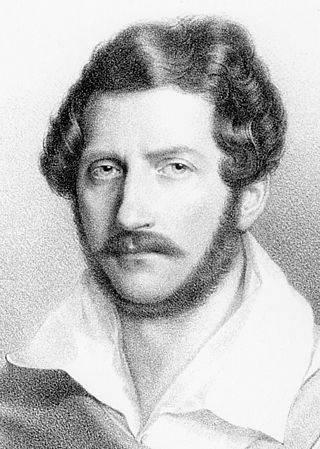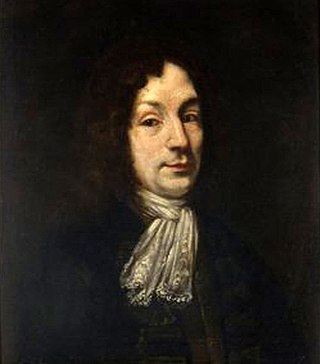Related Research Articles

Pietro Antonio Domenico Trapassi, better known by his pseudonym of Pietro Metastasio, was an Italian poet and librettist, considered the most important writer of opera seria libretti.

Orfeo ed Euridice is an opera composed by Christoph Willibald Gluck, based on the myth of Orpheus and set to a libretto by Ranieri de' Calzabigi. It belongs to the genre of the azione teatrale, meaning an opera on a mythological subject with choruses and dancing. The piece was first performed at the Burgtheater in Vienna on 5 October 1762, in the presence of Empress Maria Theresa. Orfeo ed Euridice is the first of Gluck's "reform" operas, in which he attempted to replace the abstruse plots and overly complex music of opera seria with a "noble simplicity" in both the music and the drama.

Opera seria is an Italian musical term which refers to the noble and "serious" style of Italian opera that predominated in Europe from the 1710s to about 1770. The term itself was rarely used at the time and only attained common usage once opera seria was becoming unfashionable and beginning to be viewed as something of a historical genre. The popular rival to opera seria was opera buffa, the 'comic' opera that took its cue from the improvisatory commedia dell'arte.

Italian opera is both the art of opera in Italy and opera in the Italian language. Opera was in Italy around the year 1600 and Italian opera has continued to play a dominant role in the history of the form until the present day. Many famous operas in Italian were written by foreign composers, including Handel, Gluck and Mozart. Works by native Italian composers of the 19th and early 20th centuries, such as Rossini, Bellini, Donizetti, Verdi and Puccini, are amongst the most famous operas ever written and today are performed in opera houses across the world.
Ignaz Jakob Holzbauer was an Austrian composer of symphonies, concertos, operas, and chamber music, and a member of the Mannheim school. His aesthetic style is in line with that of the Sturm und Drang "movement" of German art and literature.

Il sogno di Scipione, K. 126, is a dramatic serenade in one act composed by Wolfgang Amadeus Mozart to a libretto by Pietro Metastasio, which is based on the book Somnium Scipionis by Cicero; Metastasio's libretto has been set to music several times. Mozart had originally composed the work at the age of 15 for his patron, Prince-Archbishop Sigismund von Schrattenbach. After the bishop's death before it could be performed, Mozart dedicated it to Schrattenbach's successor, Count Colloredo. It was given a private performance in the Archbishop's Palace in Salzburg on 1 May 1772, although not in its entirety. Only one aria, the final chorus and the recitative dedicating it to the new Prince-Archbishop were performed. It is highly unlikely that it was ever performed in its entirety in Mozart's lifetime.

Francesco Domenico Araja was an Italian composer who spent 25 years in Russia and wrote at least 14 operas for the Russian Imperial Court including Tsefal i Prokris, the first opera in Russian.

Le convenienze ed inconvenienze teatrali, also known as Viva la mamma and Viva la Diva, is a dramma giocoso, or opera, in two acts by Gaetano Donizetti. The Italian libretto was written by Domenico Gilardoni, adapted from Antonio Simeone Sografi's plays Le convenienze teatrali (1794) and Le inconvenienze teatrali (1800).
Opera is an art form in which singers and musicians perform a dramatic work, which combines a text and a musical score. Opera is part of the Western classical music tradition. While the scale of opera can be larger or smaller—there are many different genres of opera—performance typically involves different types of artist and technical staff. Usually an orchestra led by a conductor accompanies the singers. In contrast to spoken theatre, the opera world is international. Italian, German, French, English, and Russian works are performed worldwide in their original languages, and artists travel from country to country performing.

Giuseppe Nicolini was an Italian composer who wrote at least 45 operas. From 1819 onwards, he devoted himself primarily to religious music. He was born and died at Piacenza. The music conservatory of Piacenza is named after him.
The term festa teatrale refers to a genre of drama, and of opera in particular. The genre cannot be rigidly defined, and in any case feste teatrali tend to be split into two different sets: feste teatrali divided by acts are operas, while works in this genre performed without division, or merely cut into two parts, are serenatas. A festa teatrale is a dramatic work, performed on stage.

Vittoria TesiTramontini, also known as "La Fiorentina" or "La Moretta" was an Italian opera singer of the 18th century. Her vocal range was that of a contralto. She is "regarded as the first eminent singer of color in the history of Western music".
Gennaro Astarita was an Italian composer, mainly of operas. The place of his birth is unknown, although he was active in Naples for many years. He began his operatic career in 1765, collaborating with Niccolò Piccinni in the writing of the opera L'orfana insidiata. He became the maestro di cappella in Naples in 1770.

Gennaro Manna was an Italian composer based in Naples. He was a member of the Neapolitan School. His compositional output includes 13 operas and more than 150 sacred works, including several oratorios.

Luca Antonio Predieri was an Italian composer and violinist. A member of a prominent family of musicians, Predieri was born in Bologna and was active there from 1704. In 1737 he moved to Vienna, eventually becoming Kapellmeister to the imperial Habsburg court in 1741, a post he held for ten years. In 1765 he returned to his native city where he died two years later at the age of 78. A prolific opera composer, he was also known for his sacred music and oratorios. Although his operas were largely forgotten by the end of his own lifetime and most of their scores lost, individual arias as well some of his sacred music are still performed and recorded.

Il Parnaso confuso is an opera by the composer Christoph Willibald Gluck. It takes the form of an azione teatrale in one act. The Italian-language libretto is by Pietro Metastasio. The opera premiered on 24 January 1765 at Schönbrunn Palace in Vienna. All the members of the cast were archduchesses of the Habsburg family and the work was conducted by the future Emperor Leopold II from the harpsichord.

La corona is an opera by the composer Christoph Willibald Gluck. It takes the form of an azione teatrale in one act. The Italian-language libretto is by Pietro Metastasio. The opera was intended to celebrate the name day of Emperor Francis I on 4 October 1765 but the Emperor died in August and it remained unperformed until the 20th century. It was written for the four archduchess daughters of the Emperor, like Gluck's Il Parnaso confuso, premiered earlier that year at Schönbrunn Palace in Vienna.
Pietro Pompeo Sales was an Italian composer.

Giovanni Ambrogio Migliavacca was an Italian poet and librettist. A student and protégé of Metastasio, he was primarily active in the court theaters of Dresden and Vienna. His most successful work was the libretto for the opera Solimano, first set by Johann Adolph Hasse in 1753 and subsequently set by eighteen other composers in the following decades.
References
- The Oxford Dictionary of Opera, by John Warrack and Ewan West (1992), 782 pages, ISBN 0-19-869164-5